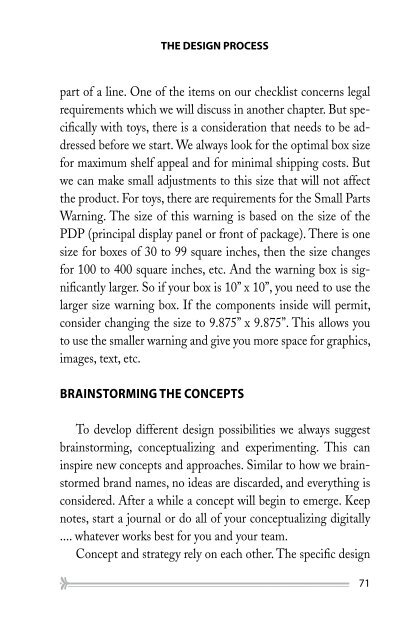The Art of Package Design
There is more to designing a successful package than just making it noticeable. This book explores how to get the most out of the design process and the regulations and legalities required in packaging. It also explores the pitfalls people fall into when trying to create packaging in multi-languages for sale in other markets and cultures. Written by Mark Lehberg, a 30+ year creative professional, this book offers creative insights and tips to create that perfect package.
There is more to designing a successful package than just making it noticeable. This book explores how to get the most out of the design process and the regulations and legalities required in packaging. It also explores the pitfalls people fall into when trying to create packaging in multi-languages for sale in other markets and cultures. Written by Mark Lehberg, a 30+ year creative professional, this book offers creative insights and tips to create that perfect package.
Create successful ePaper yourself
Turn your PDF publications into a flip-book with our unique Google optimized e-Paper software.
THE DESIGN PROCESS<br />
part <strong>of</strong> a line. One <strong>of</strong> the items on our checklist concerns legal<br />
requirements which we will discuss in another chapter. But specifically<br />
with toys, there is a consideration that needs to be addressed<br />
before we start. We always look for the optimal box size<br />
for maximum shelf appeal and for minimal shipping costs. But<br />
we can make small adjustments to this size that will not affect<br />
the product. For toys, there are requirements for the Small Parts<br />
Warning. <strong>The</strong> size <strong>of</strong> this warning is based on the size <strong>of</strong> the<br />
PDP (principal display panel or front <strong>of</strong> package). <strong>The</strong>re is one<br />
size for boxes <strong>of</strong> 30 to 99 square inches, then the size changes<br />
for 100 to 400 square inches, etc. And the warning box is significantly<br />
larger. So if your box is 10” x 10”, you need to use the<br />
larger size warning box. If the components inside will permit,<br />
consider changing the size to 9.875” x 9.875”. This allows you<br />
to use the smaller warning and give you more space for graphics,<br />
images, text, etc.<br />
BRAINSTORMING THE CONCEPTS<br />
To develop different design possibilities we always suggest<br />
brainstorming, conceptualizing and experimenting. This can<br />
inspire new concepts and approaches. Similar to how we brainstormed<br />
brand names, no ideas are discarded, and everything is<br />
considered. After a while a concept will begin to emerge. Keep<br />
notes, start a journal or do all <strong>of</strong> your conceptualizing digitally<br />
.... whatever works best for you and your team.<br />
Concept and strategy rely on each other. <strong>The</strong> specific design<br />
71



